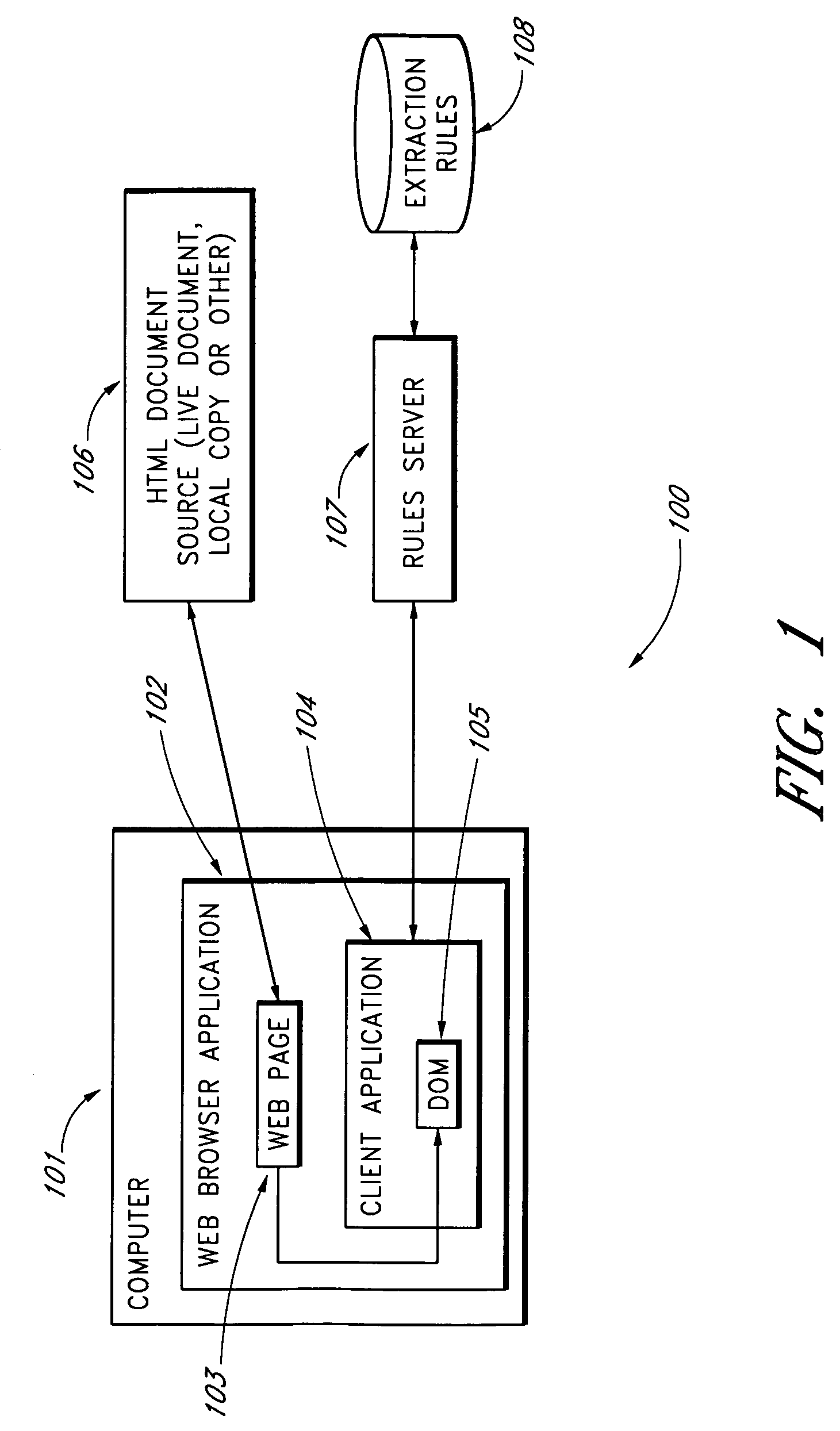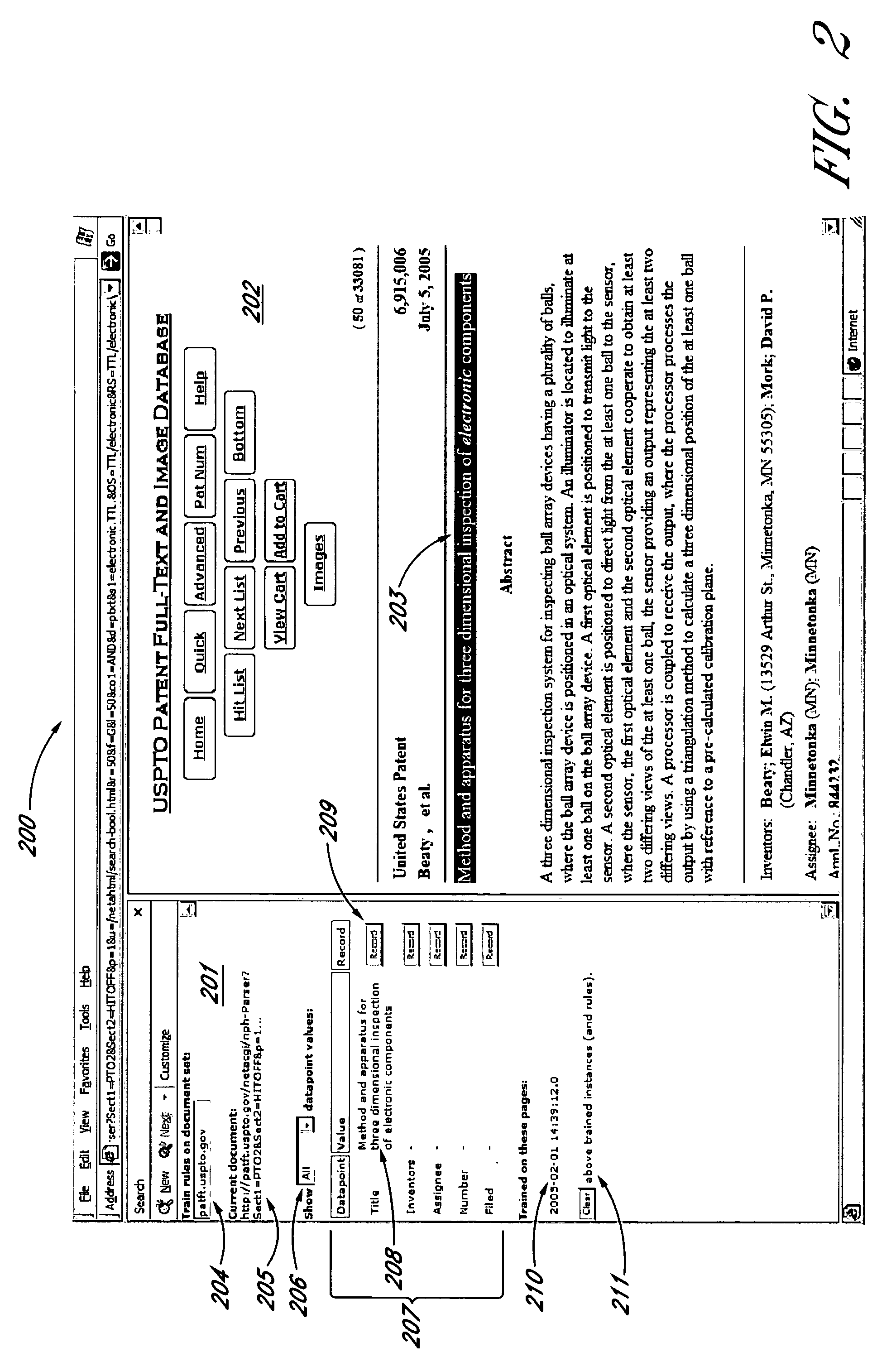Correlation-based information extraction from markup language documents
a technology of correlation and information extraction, applied in the field of correlation-based information extraction from markup language documents, can solve the problems of inability to optimize information on any particular web page for substantive analysis by machine or computer, and inability to reliably extract desired data values from other web pages. to achieve the effect of improving the reliability of datapoint extraction
- Summary
- Abstract
- Description
- Claims
- Application Information
AI Technical Summary
Benefits of technology
Problems solved by technology
Method used
Image
Examples
Embodiment Construction
[0014]Specific embodiments of the invention will now be described with reference to the drawings. These embodiments are intended to illustrate, and not limit, the present invention. The scope of the invention is defined by the claims.
[0015]a. Overview
[0016]FIG. 1 illustrates a system 100 in accordance with one embodiment of the present invention, and will be used to explain the general process by which extraction rules may be generated and trained under the control of a user. As will be recognized, the inventive methods described herein for generating and training extraction rules are not limited to the particular environment shown in FIG. 1.
[0017]In the embodiment shown in FIG. 1, a user browses the web through an Internet-connected computer 101 running a web browser 102. The web browser 102 runs on the computer 101 in conjunction with a client application 104 which is responsible in the illustrated embodiment for generating the extraction rules. In browsing the web, the user cause...
PUM
 Login to View More
Login to View More Abstract
Description
Claims
Application Information
 Login to View More
Login to View More - R&D
- Intellectual Property
- Life Sciences
- Materials
- Tech Scout
- Unparalleled Data Quality
- Higher Quality Content
- 60% Fewer Hallucinations
Browse by: Latest US Patents, China's latest patents, Technical Efficacy Thesaurus, Application Domain, Technology Topic, Popular Technical Reports.
© 2025 PatSnap. All rights reserved.Legal|Privacy policy|Modern Slavery Act Transparency Statement|Sitemap|About US| Contact US: help@patsnap.com



